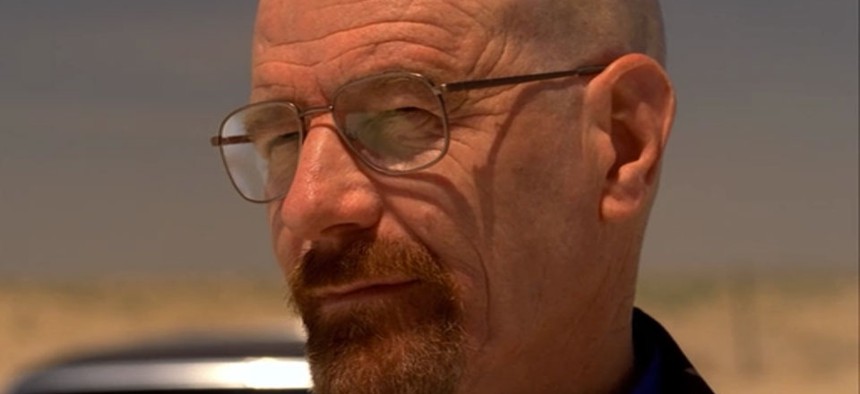
Sony Pictures/AMC
3 Leadership Lessons from Breaking Bad's Bryan Cranston
The long road to success walked by the man who plays TV's Walter White.
I’m late to the party for what many claim is The. Greatest. Television. Show. Ever. Over the past couple of months, I’ve found myself really getting into Breaking Bad. Thanks to my iPad, it’s become my late night flight obsession on the way home from business trips. I’m about halfway through Season 2 and find myself thinking about bad guys like Tuco at odd times.
The show is extremely mentally sticky. The biggest reason for that is the masterful performance that Bryan Cranston gives as Walter White, the meek high school chemistry teacher who transforms himself into the evil meth amphetamine kingpin Heisenberg.
Trying to read around the late seasons spoilers, I raced through Tad Friend’s profile of Cranston in the latest issue of The New Yorker. My big takeaway from the article is that Cranston is a good guy who has worked very hard over the years to become the sensation he is today, playing TV's ultimate anti-hero. In reading the article, there were a few vignettes about how Cranston has approached his career that struck me as instructive for leaders who want to have a long term impact (and, no, none of them involved cooking meth).
Here’s what made an impression on me.
Create Your Spots – One of Cranston’s breakthrough roles was playing Hal, the dad on the sitcom Malcolm in the Middle. He took what the show runner intended to be a very small part and turned it into a mainstay by understanding better than anyone else how he could contribute. Lois, the mother and lead female on the show, was written as a loud, strong and bombastic character. Cranston played Hal as the opposite. He did it so well that after three episodes the head writer was figuring out ways to feature Hal more in the scripts. Cranston created his spots by understanding how he could best add value to the whole. Effective leaders do the same.
Be Methodical – For years now, Cranston has determined what roles he’s going to take based on a spreadsheet that he calls the Cranston Project Assessment Scale. The horizontal axis is criteria like story, script, role, director and cast listed in descending order of importance. The vertical scale is his rating scale from very good to poor. He gives bonus points for things like money and detracts points for things like time away from home. He passes on any offer that scores less than 16 points and slam dunk takes any project that scores more than 26. That seems like a model for any leader who’s interested in prioritizing their time and attention.
Speak for Your Work – Back in the days when he was making his living doing commercials and guest spots on Murder, She Wrote and Matlock, Cranston sent post cards to casting directors to let them know he was going to be on TV. Cranston said this about his strategy: “I knew ninety-nine percent of them wouldn’t watch, but my face and name would get in front of them, and it would plant the subliminal message, ‘He works a lot, this guy!’” Cranston understood what I’ve written about here before, when you do good work, the work doesn’t speak for itself, you have to speak for the work.
Are you a Breaking Bad or Bryan Cranston fan? What leadership lessons – good or bad – have you gleaned from Walt/Heisenberg or the actor who plays him?







